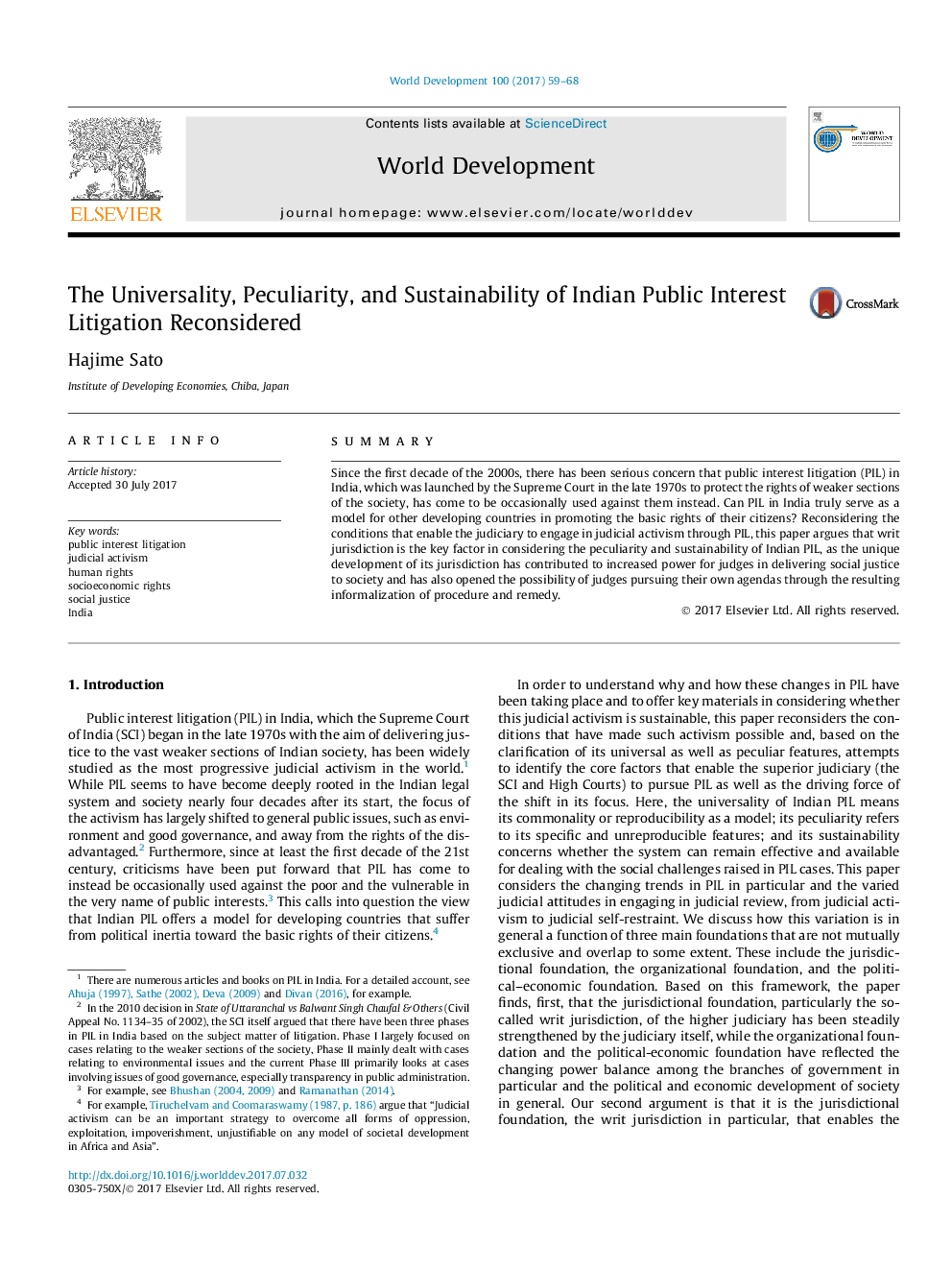| Article ID | Journal | Published Year | Pages | File Type |
|---|---|---|---|---|
| 5105010 | World Development | 2017 | 10 Pages |
Abstract
Since the first decade of the 2000s, there has been serious concern that public interest litigation (PIL) in India, which was launched by the Supreme Court in the late 1970s to protect the rights of weaker sections of the society, has come to be occasionally used against them instead. Can PIL in India truly serve as a model for other developing countries in promoting the basic rights of their citizens? Reconsidering the conditions that enable the judiciary to engage in judicial activism through PIL, this paper argues that writ jurisdiction is the key factor in considering the peculiarity and sustainability of Indian PIL, as the unique development of its jurisdiction has contributed to increased power for judges in delivering social justice to society and has also opened the possibility of judges pursuing their own agendas through the resulting informalization of procedure and remedy.
Keywords
Related Topics
Social Sciences and Humanities
Economics, Econometrics and Finance
Economics and Econometrics
Authors
Hajime Sato,
